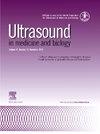Automatic Segmentation of Sylvian Fissure in Brain Ultrasound Images of Pre-Term Infants Using Deep Learning Models
IF 2.4
3区 医学
Q2 ACOUSTICS
引用次数: 0
Abstract
Objective
Segmentation of brain sulci in pre-term infants is crucial for monitoring their development. While magnetic resonance imaging has been used for this purpose, cranial ultrasound (cUS) is the primary imaging technique used in clinical practice. Here, we present the first study aiming to automate brain sulci segmentation in pre-term infants using ultrasound images.
Methods
Our study focused on segmentation of the Sylvian fissure in a single cUS plane (C3), although this approach could be extended to other sulci and planes. We evaluated the performance of deep learning models, specifically U-Net and ResU-Net, in automating the segmentation process in two scenarios. First, we conducted cross-validation on images acquired from the same ultrasound machine. Second, we applied fine-tuning techniques to adapt the models to images acquired from different vendors.
Results
The ResU-Net approach achieved Dice and Sensitivity scores of 0.777 and 0.784, respectively, in the cross-validation experiment. When applied to external datasets, results varied based on similarity to the training images. Similar images yielded comparable results, while different images showed a drop in performance. Additionally, this study highlighted the advantages of ResU-Net over U-Net, suggesting that residual connections enhance the model's ability to learn and represent complex anatomical structures.
Conclusion
This study demonstrated the feasibility of using deep learning models to automatically segment the Sylvian fissure in cUS images. Accurate sonographic characterisation of cerebral sulci can improve the understanding of brain development and aid in identifying infants with different developmental trajectories, potentially impacting later functional outcomes.
利用深度学习模型自动分割早产儿脑部超声波图像中的西尔维氏裂隙
目的:早产儿脑沟分割是监测早产儿发育的重要手段。虽然磁共振成像已被用于此目的,但颅超声(cUS)是临床实践中使用的主要成像技术。在这里,我们提出了第一项研究,旨在利用超声图像自动分割早产儿脑沟。方法:我们的研究主要集中在单一cu平面(C3)的Sylvian裂缝分割,尽管这种方法可以扩展到其他沟和平面。我们评估了深度学习模型,特别是U-Net和ResU-Net在两种场景下自动分割过程中的性能。首先,我们对同一台超声仪获得的图像进行交叉验证。其次,我们应用微调技术使模型适应从不同供应商获得的图像。结果:在交叉验证实验中,ResU-Net方法的Dice和Sensitivity得分分别为0.777和0.784。当应用于外部数据集时,结果根据与训练图像的相似性而变化。相似的图像产生了相似的结果,而不同的图像则显示出性能下降。此外,本研究强调了ResU-Net相对于U-Net的优势,表明残留连接增强了模型学习和表征复杂解剖结构的能力。结论:本研究证明了使用深度学习模型自动分割cu图像中Sylvian裂隙的可行性。准确的脑沟超声特征可以提高对大脑发育的理解,并有助于识别具有不同发育轨迹的婴儿,这可能会影响后来的功能结局。
本文章由计算机程序翻译,如有差异,请以英文原文为准。
求助全文
约1分钟内获得全文
求助全文
来源期刊
CiteScore
6.20
自引率
6.90%
发文量
325
审稿时长
70 days
期刊介绍:
Ultrasound in Medicine and Biology is the official journal of the World Federation for Ultrasound in Medicine and Biology. The journal publishes original contributions that demonstrate a novel application of an existing ultrasound technology in clinical diagnostic, interventional and therapeutic applications, new and improved clinical techniques, the physics, engineering and technology of ultrasound in medicine and biology, and the interactions between ultrasound and biological systems, including bioeffects. Papers that simply utilize standard diagnostic ultrasound as a measuring tool will be considered out of scope. Extended critical reviews of subjects of contemporary interest in the field are also published, in addition to occasional editorial articles, clinical and technical notes, book reviews, letters to the editor and a calendar of forthcoming meetings. It is the aim of the journal fully to meet the information and publication requirements of the clinicians, scientists, engineers and other professionals who constitute the biomedical ultrasonic community.

 求助内容:
求助内容: 应助结果提醒方式:
应助结果提醒方式:


